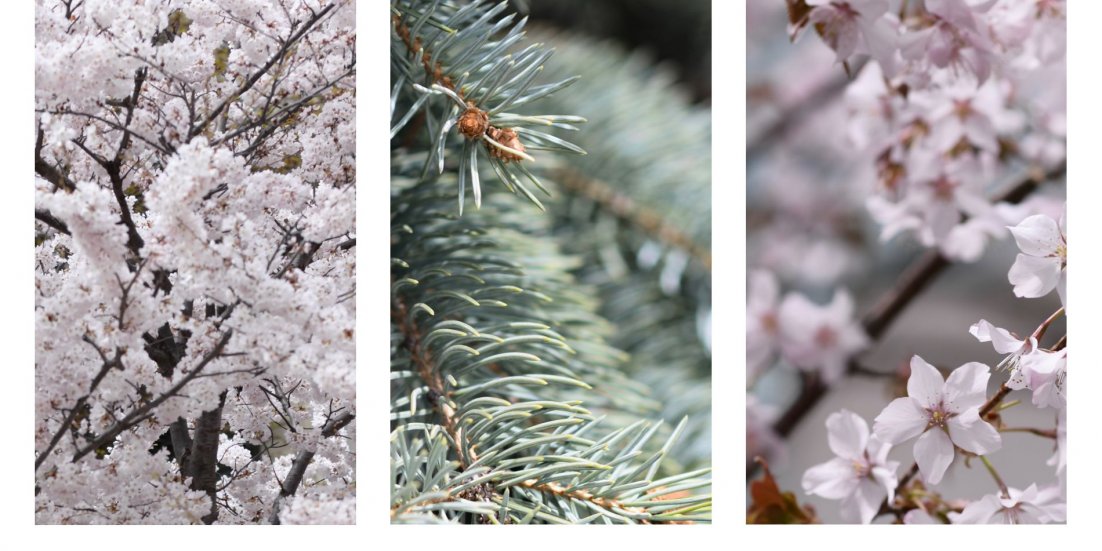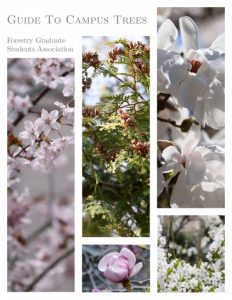
FGSA publishes guide to trees on the St. George campus
The Daniels Faculty’s Forestry Graduate Student Association (FGSA) has published the third edition of Guide to Campus Trees, a field guide for trees and shrubs on the University of Toronto’s St. George campus. The guide is both a point of interest for those visiting and walking the campus, and a useful learning tool for incoming forestry grad students from other academic backgrounds.
“There is quite a bit of diversity of tree species on campus, including both native and introduced trees. We included 100 different species of tree and shrub in the guide but there are quite a few more, which makes the area a great spot to learn the basics of dendrology,” said Emmett Snyder, lead for the project, now a graduate of Forestry’s M.F.C. program working at the Daniels Faculty’s Mass Timber Institute. “Plus, the greenspace adds a lot to the campus experience, especially in the spring when the redbuds, cherries, or magnolias are in bloom or in the summer.”
 The guide is available for free online, complete with photos, an outline of notable features for each species, and mapped locations for each. It has the effect of making the campus’ greenspace into a practical learning tool, providing a detailed overview of the unique mix of species that define the University.
The guide is available for free online, complete with photos, an outline of notable features for each species, and mapped locations for each. It has the effect of making the campus’ greenspace into a practical learning tool, providing a detailed overview of the unique mix of species that define the University.
“We knew from existing inventories and experience that there was quite a selection of species on campus, but this information was not publicly available,” said Snyder. “We also felt that there was no substitute for experience when it came to learning to identify trees, so we felt that providing a location for each specimen in the guide so readers could go and look at that specific tree was important as there is only so much you can learn from photographs, drawings, and text.”
Production (at large) has been a multi-year effort, with initial photography and mapping being completed in the summer of 2019. The team behind the project made improvements in subsequent editions, leading to the eventual production and distribution of the third edition: “truly a team effort and it would not have been possible without the help of everyone involved,” according to its preface (written by Snyder).
“We took the list of species in the existing inventory and went around campus to find a good specimen,” said Snyder. “Once we did, we photographed it and used the geotag metadata in the photographs to extract coordinates from which we were able to draw maps that show readers where to find the specimen we photographed.”
The third edition of the guide was specifically intended to support tree identification in the winter months, with images that show different seasonal contexts, and tree bark. The book acts well as a written accompaniment to a stroll on the Philosopher’s Walk, Hart House Circle, and the Earth Sciences courtyards.





